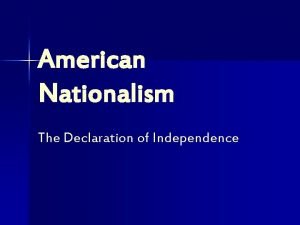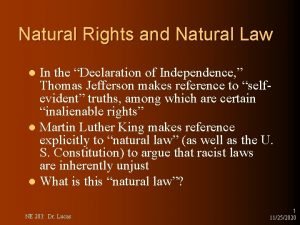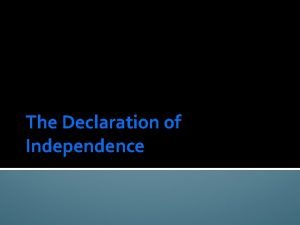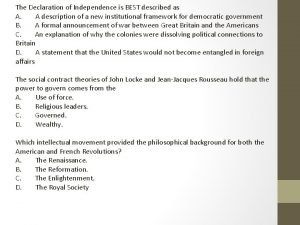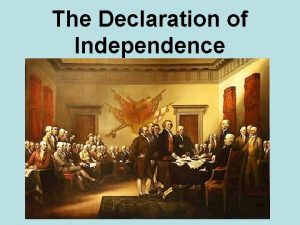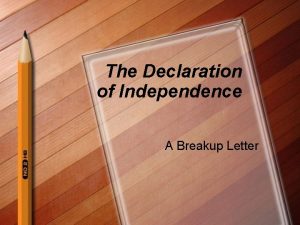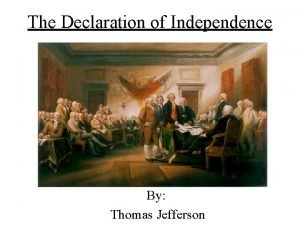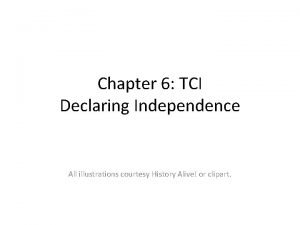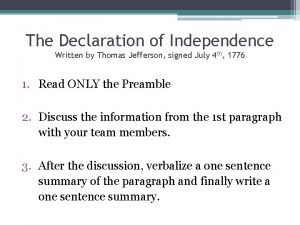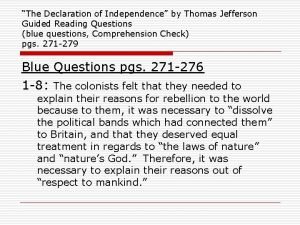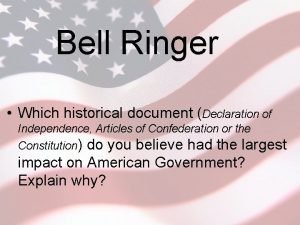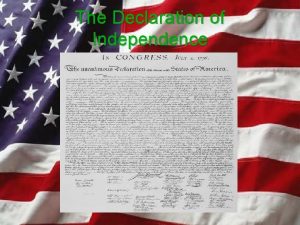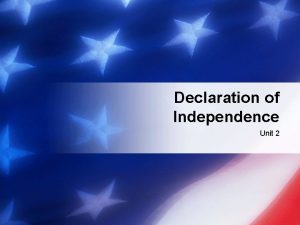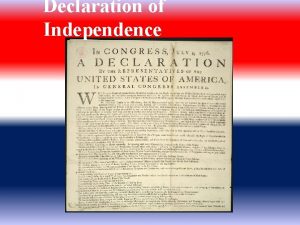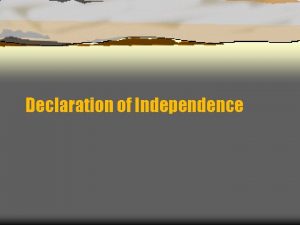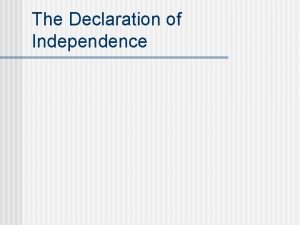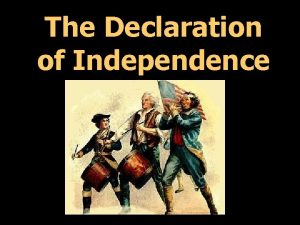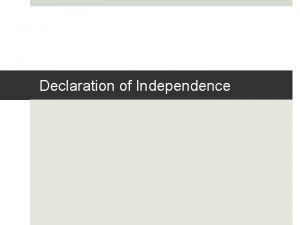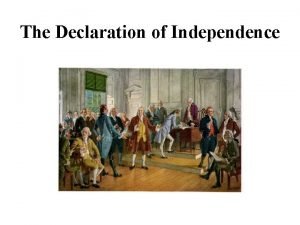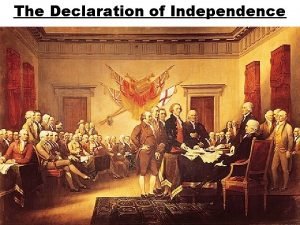The Declaration of Independence Whats in the Declaration














- Slides: 14

The Declaration of Independence

What’s in the Declaration? • The colonists told Great Britain that they were a separate, independent nation. • They complained about the king and his treatment of the colonists. • It DID NOT make laws for new government. • Instead, the Declaration created a framework for the kind of government the Founding Fathers wanted to create.

ARTICLES OF CONFEDERATION, 1781 -89 • America’s 1 st FORM OF GOVERNMENT

Problems with the Articles of Confederation • It created an UNICAMERAL CONGRESS -(One lawmaking house) • It did not include an EXECUTIVE OR JUDICIAL BRANCH. • It created a WEAK CENTRAL government and a WEAK UNION OF 13 SEPARATE STATES. – NO POWER TO TAX – NO POWER TO REGULATE INTERSTATE TRADE. – NO POWER TO MAINTAIN AN ARMY

Problems with the Articles of Confederation • Shay’s Rebellion and other rebellions showed that the federal government did not have enough control. • Each state was operating like a separate country. • A stronger federal government was needed!

The United States Constitution

The Constitutional Convention • May 25, 1787 in Philadelphia, Pennsylvania. • George Washington presided over the Convention. • James Madison from Virginia won the name, “Father of the Constitution. ” • Sept. 17, 1787 - 39 delegates signed. – It was provided that the Constitution would go into effect as soon as 9 states ratified it.


Ratification and Amending • Needed 9 of 13 to ratify (pass) • 1788 - eleven states ratified the constitution. • 1789 -New Government began functioning. • 1791 -American Bill of Rights was added – First 10 Amendments to the Constitution.

Characteristics of the Constitution • Three Branches of Government – Checks and Balances • Bicameral Legislative branch • Power to tax and regulate interstate trade • Centralized power

Bicameral Legislature – 2 lawmaking houses Senate – 2 representatives from each state House of Representatives – based on population of state

Capitol Building – Washington D. C. where the law-making magic happens


 What was the cause of the declaration of independence
What was the cause of the declaration of independence Natural rights in the declaration of independence
Natural rights in the declaration of independence Break up letter declaration of independence
Break up letter declaration of independence The declaration of independence is best described as
The declaration of independence is best described as Declaration of independence list
Declaration of independence list Break up letter declaration of independence
Break up letter declaration of independence Declaration of independence all men are created equal
Declaration of independence all men are created equal Tci chapter 8 - creating the constitution answer key
Tci chapter 8 - creating the constitution answer key Too late to apologize declaration
Too late to apologize declaration Declaration of independence summary
Declaration of independence summary Thomas hobbes declaration of independence
Thomas hobbes declaration of independence Parallelism in the declaration of independence
Parallelism in the declaration of independence Think on these things
Think on these things Teenage declaration of independence
Teenage declaration of independence Declaration of independence bell ringer
Declaration of independence bell ringer
